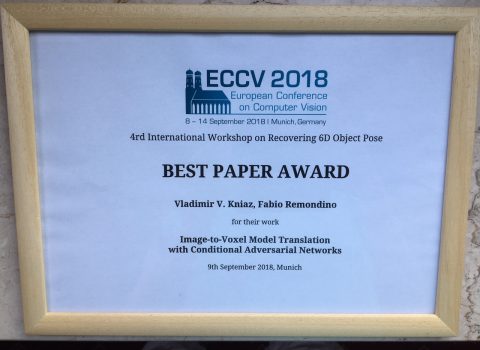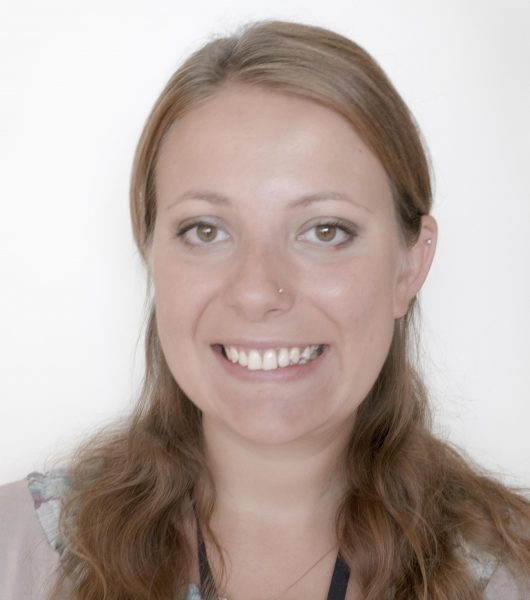
PAST TO PRESENT: rediscovering history through augmented reality
Chiese Valley in Trentino combines tradition and innovation to rediscover the history of Fort Larino and the Great War
Remembering and visualizing. Showing and demonstrating. Engaging but also knowing how to respond.
Big challenges, which FBK has decided to accept and face. The foundation has recently opened a collaboration with the municipality of Sella Giudicarie, the Italian War History Museum of Rovereto, the Fondazione Museo Storico del Trentino, as well as local private collectors, where 3D reconstruction technologies and augmented reality have become a fascinating way to show and discover objects and events of the Great War in an unprecedented way, of which important testimonies are preserved throughout the Trentino.
The common goal is the promotion and activation of 3D digital survey technologies aimed at rediscovering the history of some of the most memorable corners of the Valley, such as Forte Larino. More specifically, FBK has created two augmented reality applications (one of which has not been activated yet due to the Covid-19 emergency) able to show with the simple use of a smartphone or tablet how Forte Larino appeared inside and outside.
“The project stems from the desire to use new digital technologies and three-dimensional reconstruction to enhance the Trentino area – explains Elisa Mariarosa Farella, FBK researcher at the 3D Optical Metrology research unit – the Foundation has developed all the technological part of the project in starting from the acquisition of objects linked to the history of the First World War, then to the history of Forte Larino itself, through photogrammetry techniques that have allowed the objects to be reconstructed in3D. We also dealt with the development of applications, which allow the user to view the three-dimensional models directly inside the Fort itself”.
In addition to the traditional guided tours conducted by voluntary associations, the municipality of Sella Giudicarie has therefore decided to focus on thematic itineraries in augmented reality that are easy to access for each visitor, to be explored independently thanks to their smartphone.
“We relied on augmented reality to be able to pursue a path of knowledge inside the Fort and museum of the place – adds Frank Salvadori, administrator with responsibility for cultural heritage – There are not only the artifacts, (reproduced from originals preserved in the collections of the Rovereto Museum, the Luserna Documentation Center and the private collection of Mr. Antonio Scozzafava), but also a whole series of events that have occurred over time in these places, such as structures that have been canceled from the course of history and that today we can return to admire through augmented reality”.
WHAT RESEARCH STAYS BEHIND THE PROJECT?
The research area concerned by this application is 3D Optical Metrology for the documentation and enhancement of cultural heritage. FBK’s 3DOM research unit is actively involved in accurate measurements and reality-based 3D reconstruction issues.
More generally, a consolidated know-how has been acquired in the development of metrological software and methodologies based on terrestrial photogrammetry, UAV (Unmanned aerial vehicle, e.g. drones), aerial and satellite, as well as on active optical triangulation sensors and time of flight (eg laser scanner).
The research group is engaged in georeferenced and geospatial data analysis, landscape 3D monitoring and modeling, sensor data integration, environmental change detection, digital reconstruction of artificial structures, metric and semantic information extraction from images and flow-rate data, mapping and surveying, geomatic algorithm design and implementation, thermal studies and analysis, mobile mapping, GIS and cartography applications, cultural heritage documentation and digital preservation.
The project is part of FBK’s increasingly strong commitment to enhance the culture of the local area not only through classic trails but also thanks to augmented and virtual reality applications for the community.
More info (scientific paper):
THE VAST PROJECT: VALORISATION OF HISTORY AND LANDSCAPE FOR PROMOTING THE MEMORY OF WWI
The VAST project, co-funded by the Cassa di Risparmio di Trento and Rovereto – CARITRO Foundation, aims to document, disseminate and enhance the sites and monuments of WWI, and is part of a series of actions promoted by the local authorities of the Autonomous Province of Trento, to:
- promote the cultural, social and economic development of Trentino;
- stimulate the production, promotion and enhancement of cultural activities capable of generating cohesion, knowledge and above all participation in the active life of the community.



